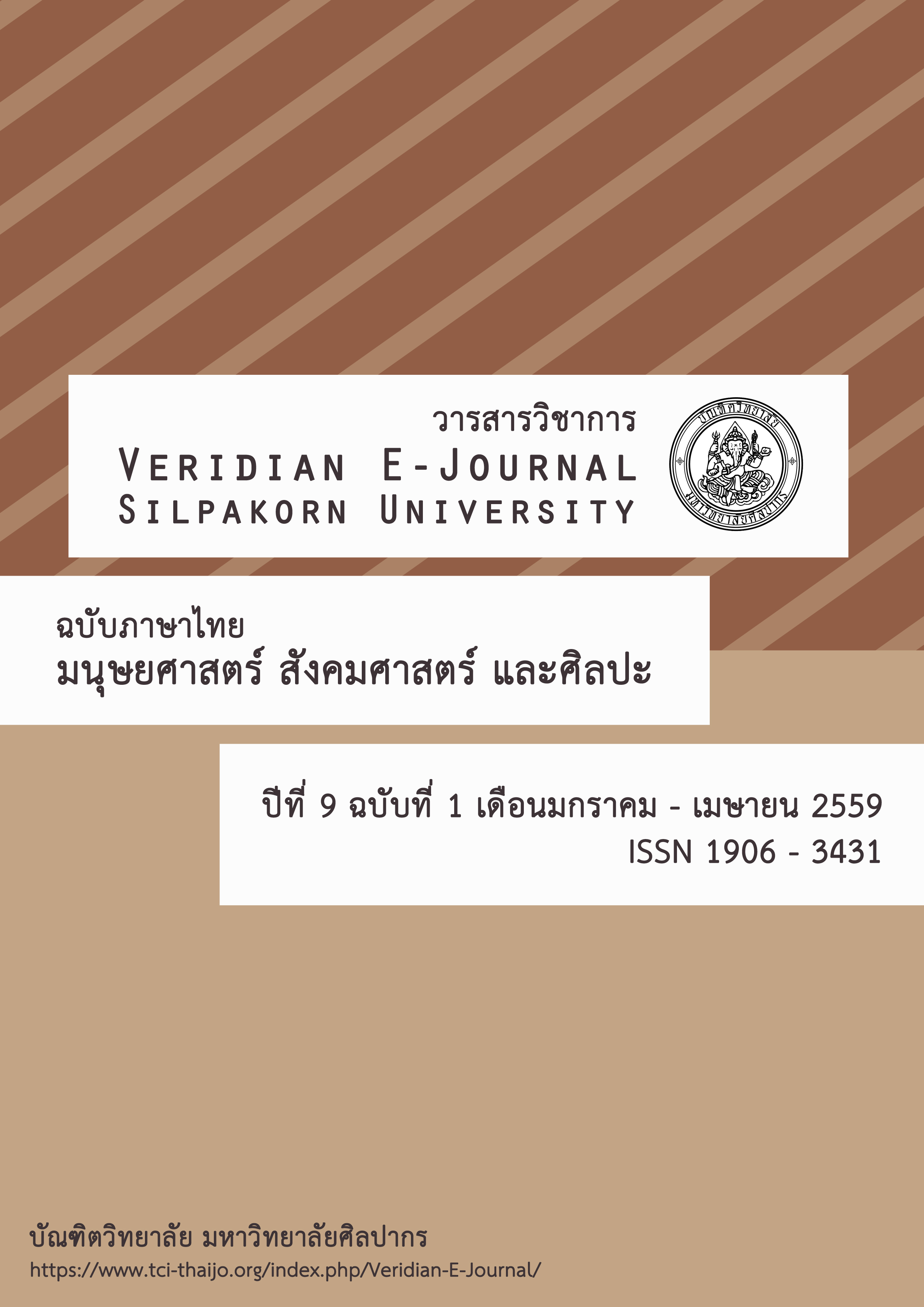การให้ความหมาย ที่มาของความหมาย และกระบวนการการทำความดี ของนักเรียนระดับชั้นมัธยมศึกษาตอนต้นโรงเรียนสตรีวัดระฆัง กรุงเทพมหานคร
Main Article Content
Abstract
บทคัดย่อ
การวิจัยครั้งนี้ มีวัตถุประสงค์เพื่อศึกษากระบวนการทำความดีของนักเรียนระดับชั้นมัธยมศึกษาตอนต้น โรงเรียนสตรีวัดระฆัง กรุงเทพมหานคร การวิจัยนี้เป็นการวิจัยเชิงคุณภาพมีระเบียบวิธีวิทยาที่จะสามารถนำมาสร้างความรู้ในการวิจัยวิธีวิทยาหนึ่งที่สามารถนำมาใช้ทำความเข้าใจ กระบวนการให้ความหมายของคน คือ วิธีวิทยาการสร้างทฤษฎีฐานรากเป็นระเบียบวิธีวิทยาในการพัฒนาแนวคิดหรือสร้างทฤษฎีจากข้อมูลปรากฏการณ์จริง ในงานวิจัยต้องการชุดของคำอธิบายเกี่ยวกับการสร้างความหมายของนักเรียนระดับมัธยมศึกษาตอนต้น ต่อการทำความดี วิธีวิทยานี้ช่วยสร้างแนวความคิดหรือมโนทัศน์ของความหมายของการทำความดี และกระบวนการทำความดี โดยเก็บรวบรวมข้อมูล และวิเคราะห์ข้อมูลไปพร้อมๆกัน ใช้การเปรียบเทียบเพื่อจำแนกประเภท และหาความสัมพันธ์ระหว่างแนวคิด เครื่องมือที่ใช้ใน การวิจัยแบ่งออกเป็นเครื่องมือที่ใช้ในการดำเนินการวิจัย และแบบสัมภาษณ์เชิงลึก แนวคำถามสัมภาษณ์แบบปลายเปิด โดยผู้ให้ข้อมูลสามารถตอบคำถามได้อย่างละเอียดเท่าที่ผู้ให้ข้อมูลต้องการผลการวิจัย จากการวิเคราะห์ข้อมูลตาทฤษฏีวิธีวิทยาการสร้างทฤษฏีฐานรากพบว่า คำตอบของความหมายและที่มาของความหมายเกิดขึ้นจากทัศนะของการสร้าง และให้ความหมายจากปัจจัยหลายด้านมี 6 ความหมาย คือ (1) ให้ความช่วยเหลือผู้อื่น โดยไม่หวังผลตอบแทน (2) ความกตัญญูต่อผู้มีพระคุณ (3) การทำบุญ (4) การช่วยเหลือสังคม (5) การบริจาคทาน (6) การไม่ทำให้ผู้อื่นเดือดร้อน จากการศึกษาความหมายของการทำความดีนั้นสอดคล้องกับแนวคิดเกี่ยวกับคุณธรรม และจริยธรรมความดี คือ การพัฒนาโดยใช้คุณธรรมเป็นพื้นฐาน
ของกระบวนการเรียนรู้ที่เชื่อมโยงความร่วมมือของสถาบันครอบครัว ชุมชนสถาบันศาสนาและสถาบันการศึกษา โดยมีจุดเน้นเพื่อพัฒนาเยาวชนให้เป็นคนดี มีความรู้ และอยู่ดีมีสุข
คำสำคัญ : กระบวนการการทำความดี / การให้ความหมาย
Abstract
This research aims to study the good deeds of students in junior high school. Satri Wat Rakhong School Bangkok This research is qualitative research methodology that can be used to create knowledge in research methodology that can be used to understand. The meaning of a person, Ground Theory Methodology is a methodology to develop a concept or Ground theory study on real phenomena. Research needs to set description of meaning of students in junior high school. The Good deeds. This methodology helps generate ideas or conceptions of the meaning of good deeds and good process. The data collection and analysis of data simultaneously, Use comparisons to classify and find relationships between concepts. Tools used in research into the tools used to carry out research and in-depth interviews. Open-ended interview questions. The data provider can answer questions thoroughly as the information required.
The findings from the analysis of the ground theory methodology are the founds: answers to the meaning from the viewpoint of creation and the meaning of many factors. Six meanings: 1) Helping others. Without hope of return 2) be grateful 3) to make merits 4) Volunteer Spirit 5) charity 6) not cause any trouble. According to the study the meaning of good deeds is consistent with the concept of morality and ethics is to develop the moral basis of the learning process are linked. Cooperation of family institutions, community, religious institutions and educational institutions. Focus on youth Development to be good with the knowledge and well-being.
Keywords: The good process / Meaning.

